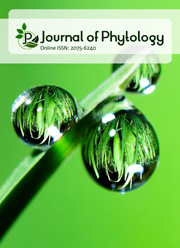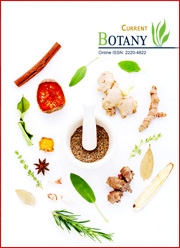Holding solution pH and composition consistently improve vase life of rose, lily and gerbera
DOI:
https://doi.org/10.25081/jp.2023.v15.7742Keywords:
Preservative Solution, Flower Quality, Silver Nitrate, Sugar, BactericideAbstract
We assessed the influence of postharvest pulsing solutions pH and composition on cut flower quality of rose (Rosa hybrida cvs. Avalanche and Black Magic), gerbera (Gerbera jamesonii cv. Beaudine) and lily (Lilium × elegans cv. Fangio) under room (20±2 °C) and cold storage (4±1 °C) conditions. Cut flowers were placed in different acidic (pH, 3.5 - 4) or basic (pH, 7.0 - 7.5) preservative solutions containing water, sugar 5% (flower food), 100 mg/L silver nitrate (AgNO3 act as a bactericide), or a commercial product (2% sugar + bactericide and fungicide). Acidic solutions had higher or similar (never lower) vase life at both room and cold storage conditions and across species. In addition, vase life was 3-4 times longer in cold storage when compared to room conditions. Leaf chlorophyll concentrations for rose and lily were inconsistent or not significant across the species at both conditions (room and cold storage). The commercial preservative solution consistently and significantly had higher vase life than water for all tested cut flower species and under both room and cold storage environments. AgNO3 ranked second in terms of vase life enhancement. Overall, the use of only flower food (sugar) or bactericide (AgNO3) had a positive impact on vase life but only the combined use of a preservative substance (specifically at pH, 3.5 - 4.0) consistently guaranteed a high cut flower quality across flower species.
Downloads
References
Ahmad, I., & Dole, J. M. (2014). Homemade floral preservatives affect postharvest performance of selected specialty cut flowers. HortTechnology, 24(3), 384-393. https://doi.org/10.21273/HORTTECH.24.3.384
Ahmad, I., Dole, J. M., Saleem, M., Khan, M. A., Akram, A., & Khan, A. S. (2013). Preservatives and packaging material have an impact on the post-harvest longevity of cut Rosahybrida L. ‘Kardinal’ flowers. The Journal of Horticultural Science and Biotechnology, 88(3), 251-256. https://doi.org/10.1080/14620316.2013.11512963
Al-Ajlouni, M. G., & Othman, Y. A. (2020). Volcanic tuff substrate improves growth and flower quality of Asiatic lily. Acta Horticulturae, 1273, 53-58, https://doi.org/10.17660/ActaHortic.2020.1273.8
Al-Ajlouni, M. G., Ayad, J. Y., & Othman, Y. A. (2017a). Particle size of volcanic tuff improves shoot growth and flower quality of Asiatic hybrid lily using soilless culture. HortTechnology, 27(2), 223-227. https://doi.org/10.21273/HORTTECH03585-16
Al-Ajlouni, M. G., Ayad, J. Y., & Othman, Y. A. (2017b). Increasing nutrient levels promote growth and flower quality in lilies grown under soilless culture. Horticultural Science, 44(4), 171-177. https://doi.org/10.17221/166/2016-HORTSCI
Burchi, G., Prisa, D., Ballarin, A., & Menesatti, P. (2010). Improvement of flower color by means of leaf treatments in lily. Scientia Horticulturae, 125(3), 456-460. https://doi.org/10.1016/j.scienta.2010.04.028
Çelikel, F. G., Reid, M. S., & Jiang, C.-Z. (2020). Postharvest physiology of cut Gardenia jasminoides flowers. Scientia Horticulturae, 261, 108983. https://doi.org/10.1016/j.scienta.2019.108983
Eason, J. R. (2002). Sandersonia aurantiaca: An evaluation of postharvest pulsing solutions to maximise cut flower quality. New Zealand Journal of Crop and Horticultural Science, 30(4), 273-279. https://doi.org/10.1080/01140671.2002.9514224
Elhindi, K. M. (2012). Evaluation of several holding solutions for prolonging vase-life and keeping quality of cut sweet pea flowers (Lathyrus odoratus L.). Saudi Journal of Biological Sciences, 19(2), 195-202. https://doi.org/10.1016/j.sjbs.2011.12.001
Halevy, A. H., & Mayak, S. (1979). Senescence and postharvest physiology of cut flowers, Part 1. In J. Janick (Eds.), Horticultural Reviews (Vol. 1, pp. 204-236) Westport, US: AVI Publishing Company. https://doi.org/10.1002/9781118060742.ch5
Han, S. S. (2003). Role of sugar in the vase solution on postharvest flower and leaf quality of Oriental Lily 'Stargazer'. HortScience, 38(3), 412-416. https://doi.org/10.21273/HORTSCI.38.3.412
Ichimura, K. (1998). Improvement of postharvest life in several cut flowers by the addition of sucrose. Japan Agricultural Research Quarterly, 32(4), 275-280.
Jafarpour, M., Golparvar, A., Askari-Khorasgani, O., & Amini, S. (2015). Improving postharvest vase-life and quality of cut gerbera flowers using natural and chemical preservatives. Journal of Central European Agriculture, 16(2), 199-211. https://doi.org/10.5513/JCEA01/16.2.1610
Kazaz, S., Kılıç, T., Doğan, E., & Sekmen, S. (2020). Vase life extension of cut hydrangea (Hydrangea macrophylla) flowers. The Journal of Horticultural Science and Biotechnology, 95(3), 325-330. https://doi.org/10.1080/14620316.2019.1676660
Lee, Y. B., & Kim, W. S. (2018). Improving vase life and keeping quality of cut rose flowers using a chlorine dioxide and sucrose holding solution. Horticultural Science and Technology, 36(3), 380-387. https://doi.org/10.12972/kjhst.20180037
Liao, L.-J., Lin, Y.-H., Huang, K.-L., Chen, W.-S., & Cheng, Y.-M. (2000). Postharvest life of cut rose flowers as affected by silver thiosulfate and sucrose. Botanical Bulletin of Academia Sinica, 41, 299-303.
McKenzie, K. (1989). Potted lilies made easy: The new, naturally short Asiatic lily varieties. GrowerTalks, 52, 48-58.
Nguyen, T. K., & Lim, J. H. (2021). Do eco-friendly floral preservative solutions prolong vase life better than chemical solutions? Horticulturae, 7(10), 415. https://doi.org/10.3390/horticulturae7100415
Othman, Y. A., Al-Ajlouni, M. G., A'saf, T. S., Sawalha, H. A., & Hani, M. B. (2021). Influence of gibberellic acid on the physiology and flower quality of gerbera and lily cut flowers. International Journal of Agriculture and Natural Resources, 48(1), 21-33, https.//doi.org/10.7764/ijanr.v48i1.2218
Pompodakis, N. E., Joyce, D. C., Terry, L. A., & Lydakis, D. E. (2004). Effects of vase solution pH and abscisic acid on the longevity of cut ‘Baccara’ roses. The Journal of Horticultural Science and Biotechnology, 79(5), 828-832. https://doi.org/10.1080/14620316.2004.11511850
Pun, U. K., & Ichimura, K. (2003). Role of sugars in senescence and biosynthesis of ethylene in cut flowers. Japan Agricultural Research Quarterly, 37(4), 219-224. https://doi.org/10.6090/jarq.37.219
Reid, M. S., & Kofranek, A. M. (1980). Recommendations for standardized vase life evaluations. Acta Horticulturae, 113, 171-173. https://doi.org/10.17660/ActaHortic.1981.113.25
Reid, M. S., Mokhtari, M., Lieth, J. L., van Doorn, W. G., & Evans, R. (1996). Modelling the postharvest life of cut roses. Acta Horticulturae, 424, 137-144. https://doi.org/10.17660/ActaHortic.1996.424.24
RFH. (2019). Royal FloraHolland annual-report-2019. Retrieved from https://view.publitas.com/cfreport/royal-floraholland-annual-report-2019/page/8
Rudnicki, R. M., Nowak, J., & Goszczynska, D. M. (1991). Cold storage and transportation conditions for cut flowers cuttings and potted plants. Acta Horticulturae, 298, 225-236. https://doi.org/10.17660/ActaHortic.1991.298.27
van Doorn, W. G., Schurer, K., & de Witte, Y. (1989). Role of endogenous bacteria in vascular blockage of cut rose flowers. Journal of Plant Physiology, 134(3), 375-381. https://doi.org/10.1016/S0176-1617(89)80259-7
van Meeteren, U., & van Gelder, H. (1999). Effect of time since harvest and handling conditions on rehydration ability of cut chrysanthemum flowers. Postharvest Biology and Technology, 16(2), 169-177. https://doi.org/10.1016/S0925-5214(99)00020-4
Woodson, W. (1991). Gene expression and flower senescence. In J. Harding, F. Singh & Mol, J. N. (Eds.), Genetics and Breeding of Ornamentals Species (pp. 317-381) London, UK: Kluwer Academic Publishers.
Published
How to Cite
Issue
Section
Copyright (c) 2023 Yahia A. Othman, Tala S. A’saf, Malik G. Al-Ajlouni, Muayyad Bany Hani, Rolston St. Hilaire

This work is licensed under a Creative Commons Attribution 4.0 International License.





 .
.